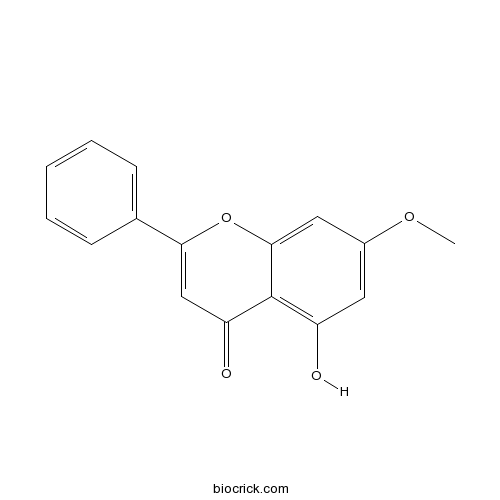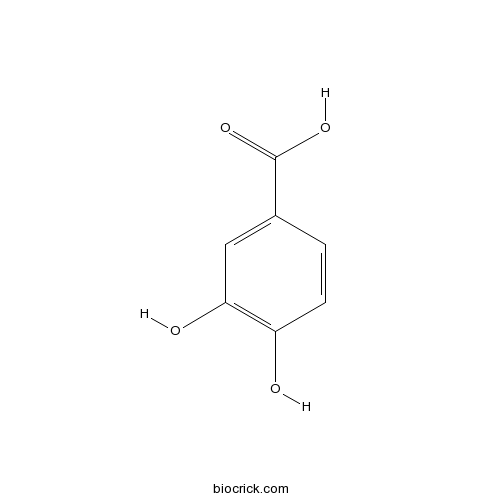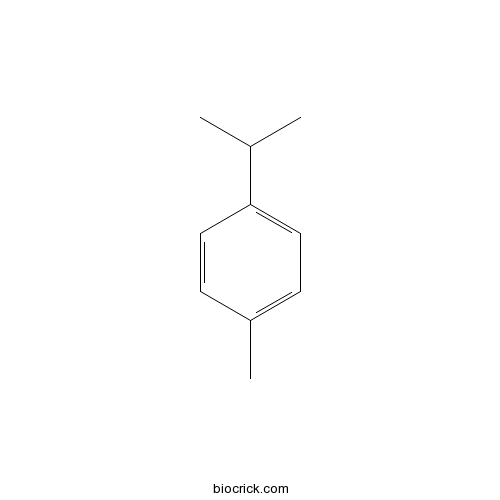Alpinia oxyphylla
Alpinia oxyphylla
1. The products in our compound library are selected from thousands of unique natural products; 2. It has the characteristics of diverse structure, diverse sources and wide coverage of activities; 3. Provide information on the activity of products from major journals, patents and research reports around the world, providing theoretical direction and research basis for further research and screening; 4. Free combination according to the type, source, target and disease of natural product; 5. The compound powder is placed in a covered tube and then discharged into a 10 x 10 cryostat; 6. Transport in ice pack or dry ice pack. Please store it at -20 °C as soon as possible after receiving the product, and use it as soon as possible after opening.
Natural products/compounds from Alpinia oxyphylla
- Cat.No. Product Name CAS Number COA
-
BCN5517
Nootkatone4674-50-4
Instructions

-
BCN5557
Chrysin480-40-0
Instructions

-
BCN5655
Tectochrysin520-28-5
Instructions

-
BCN4537
3,4-Dihydroxybenzoic acid99-50-3
Instructions

-
BCC8282
4-Isopropyltoluene99-87-6
Instructions

Complete genomic sequence of a novel macluravirus, alpinia oxyphylla mosaic virus (AloMV), identified in Alpinia oxyphylla.[Pubmed: 29786122]
A macluravirus, tentatively named alpinia oxyphylla mosaic virus (AloMV), was identified in Alpinia oxyphylla, and its complete genomic sequence determined. The positively single-stranded RNA genome is comprised of 8213 nucleotides excluding the poly (A) tail, and contains one large open reading frame encoding a polyprotein of 2,626 amino acids. Blastp search showed that the polyprotein of AloMV shared 48%~68% aa sequence identities with other reported macluraviruses. Phylogenetic analysis based on the nucleotide sequence of the polyprotein showed that AloMV, together with all other macluraviruses, clustered into the same group most closely related to cardamom mosaic virus, sharing 66.3% nt and 68% aa sequence identities, respectively. These data above suggest that AloMV represents an isolate of a putative new member within the genus Macluravirus.
Ethnopharmacological uses, phytochemistry, biological activities, and therapeutic applications of Alpinia oxyphylla Miquel: A review.[Pubmed: 29738847]
Fructus Alpiniae oxyphyllae (A. oxyphylla) is an important medicinal plant that is used not only as an edible fruit, but also as an important traditional medicine for benefiting cognitive performance and alleviating a wide spectrum of diseases. Such as; warming kidney, securing essence and arresting polyuria, as well as warming the spleen and stopping diarrhea and saliva.
Protective effects of Alpinae Oxyphyllae Fructus extracts on lipopolysaccharide-induced animal model of Alzheimer's disease.[Pubmed: 29447949]
Alpinae Oxyphyllae Fructus (AOF) with warming and tonifying the kidney and spleen, anti-salivation, anti-polyuria and anti-diarrhea functions is the dried ripe fruits of Alpinia oxyphylla Miq. (Zingiberaceae). As a traditional Chinese medicine, its application history is very long.
Effect of the serum of rats treated with Suo Quan pill on embryonic stem cells.[Pubmed: 29386153]
Suo Quan pill(SQP), a well-known and classical traditional Chinese medicine compound, consists of three traditional Chinese medicine: Alpinia oxyphylla Miq., Lindera aggregata (Sims) Kosterm., Dioscorea opposite. Its effect was summarized as supplementing kidney-yang and shrinkaging urination. This study evaluated the effects of the serum of rats treated with Suo Quan pill on embryonic stem cells(ES cells). Cell proliferation was detected by MTT assay. Cell cycle and apoptosis of ES cells were evaluated with flow cytometry. Nanog mRNA expression was verified by fluorescence quantitative PCR and Nanog protein in ES cells was determined by Western blot. The serum of SQP-treated rats not only promoted ES cells proliferation and Nanog expression in ES cells, but also inhibited H202 stimulated cell apoptosis. Furthermore, the serum of rats containing SQP affected the cell cycle distribution of ES cells, reducing the percentage of cells in G0/G1phase and increasing the percentage of cells in G2/M phase, increasing the proliferation index of ES cells. These results illustrate that the enhanced effect of SQP on ES cells proliferation is in part due to the increased expression of Nanog in ES cells, the accelerated cell cycle period and the inhibited apoptosis of ES cells.
Ameliorating effect of Alpinia oxyphylla-Schisandra chinensis herb pair on cognitive impairment in a mouse model of Alzheimer's disease.[Pubmed: 29080453]
Alzheimer's disease (AD) is the most common cause of dementia. In our previous study, we found both Alpinia oxyphylla and Schisandra chinensis can improve the cognitive function of AD. To investigate whether the Alpinia oxyphylla - Schisandra chinensis herb pair (ASHP) has ameliorating effect on cognitive impairment, we used scopolamine to induce learning and memory impairments, as a mouse model of AD. Subsequently, we carried out Y-maze test and Morris water maze test to observe the behavior of mice. Finally, the level of Acetylcholine (Ach) and muscarinic receptor (M1) receptors, the activity of choline acetyltransferase (ChAT) and acetyl cholinesterase (AChE) were measured by commercial assay kits and ELISA kit. And we used hematoxylin-eosin (HE) staining to check the changes in cortex and the CA1 region of hippocampus. ASHP significantly protected against learning and memory impairments induced by scopolamine in Y-maze test and Morris water maze test. Besides, ASHP was able to increase the level of ACh and M1 receptors, and decrease the activity of AChE, but did not significantly affect the activity of ChAT. In addition, from the results of histopathological examination, we speculated ASHP may have neuroprotective effects. This study provided an experimental basis for further study of Alpinia oxyphylla - Schisandra chinensis herb pair in AD therapy.
Quality evaluation of Alpinia oxyphylla after Aspergillus flavus infection for storage conditions optimization.[Pubmed: 28697586]
In the storage of Alpinia oxyphylla, growth of mildew (especially toxic fungi, such as Aspergillus flavus) is a potential safety risk. Few reports have investigated how A. oxyphylla storage conditions impact mold growth or how mold growth impacts the bioactive components of A. oxyphylla. In this study, sterilized A. oxyphylla samples were contaminated by artificial inoculation of A. flavus spores. The main chemical components and aflatoxin levels in the infected A. oxyphylla samples were characterized. Central composite design-response surface methodology was used to study the effects of different temperature and humidity of storage conditions on the fungal growth in A. oxyphylla and accumulation of aflatoxins. The results showed that aflatoxins levels can be minimized by storing samples at temperatures below 25 °C and with humidity less than 85%. Additionally, we found that the yield and composition of volatile oil in A. oxyphylla exhibited small changes due to mold growth. However, polysaccharide content reduced remarkably. Temperatures below 25 °C and humidity below 85% were the best storage conditions to preventing A. oxyphylla from becoming moldy. Our results provide the theoretical basis for future studies the effects of storage conditions and mold growth on the quality and safety of traditional Chinese medicines (TCMs).


